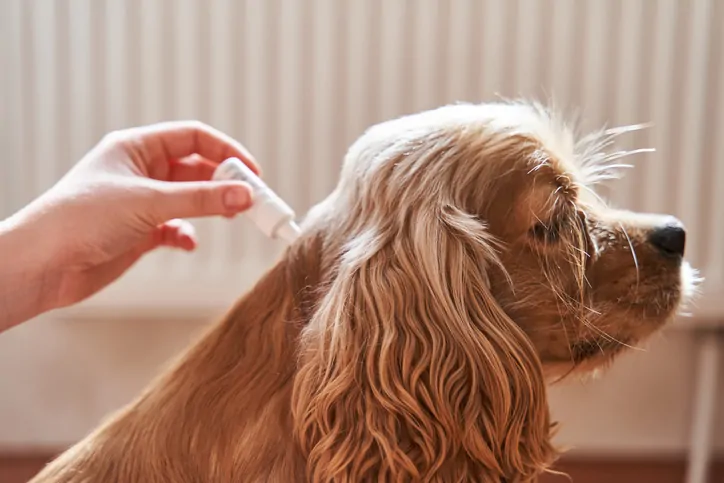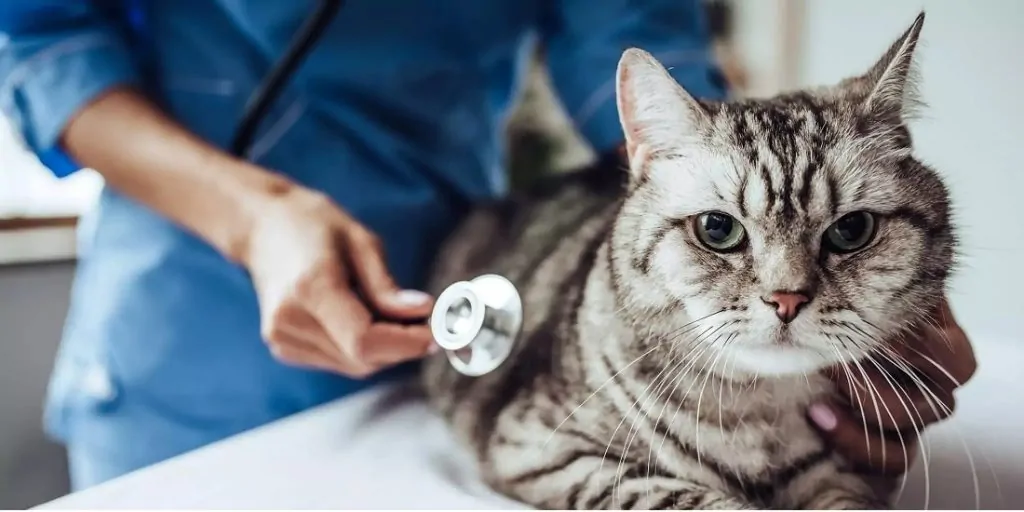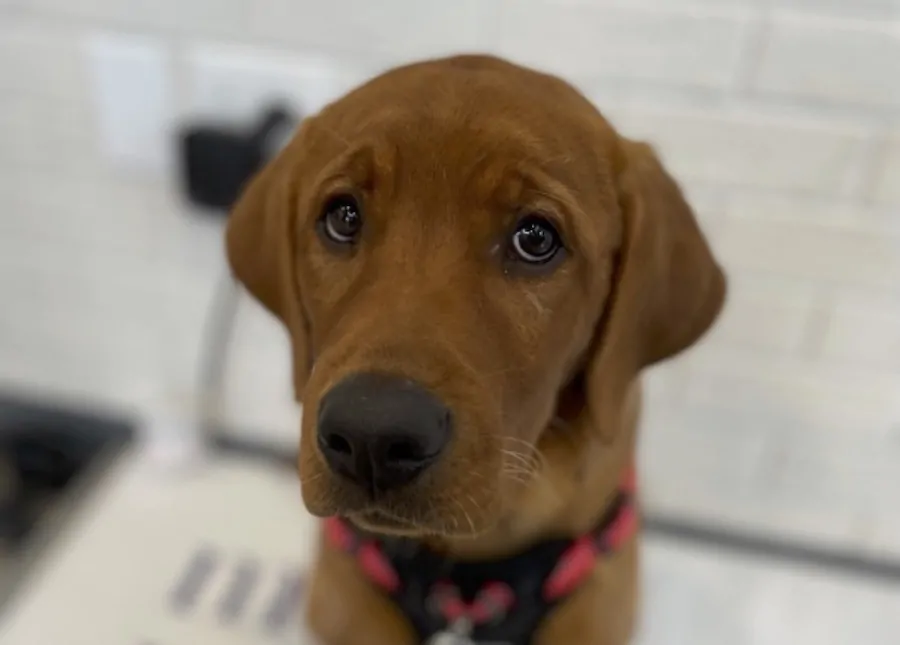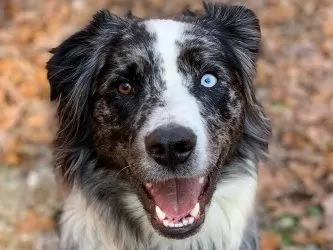Ticks spread a host of serious, incurable diseases to cats, dogs, and people. Therefore, tick control and prevention are as important to your family's health as it is to your pet's. Here we will look at why tick control is important for your cat, your dog, and your family as well as some ways you can prevent these pests from causing you and your pet serious, irreparable harm.
Ticks are a parasitic form of arachnid, like spiders, scorpions, and mites, that feed on both human and animal blood. They rely on their hosts to bring them onto your land or around your house because they can't fly or jump to go around. Ticks are frequently carried by wild animals when they occur in your area. Deer, horses, rats, and other types of wild animals can all serve as tick hosts. Cats and dogs typically act as carrier hosts for parasites once they are on your property, which allows the parasites to enter your home.

Ticks exist in a variety of temperature zones and are found all across the country. However, they seem to prefer the damp, shady woodlands of the Northeastern US the most. A US News report found that Pennslyvania had the highest incidence of tick-borne illness in the United States, followed by many of its east coast neighbors. Minnesota and Wisconsin in the northern Midwest also made the list.
Ticks transfer disease-causing viruses, bacteria, and microscopic parasites to pets and humans through their saliva which enters their host's bloodstream when the tick bites. The most common diseases spread by ticks include:
Many tick-borne diseases have common symptoms that can include body aches, joint pain, headache, fever, rash, fatigue, stiff neck, swollen lymph nodes, and facial paralysis.
Ticks are relatively easy to locate once they've settled in for a bite because, if unbothered, they will feed in the same spot for anywhere from 3 to 10 days. Ticks typically seek out the warm, moist cracks or crevices of their host for comfort and less chance of detection. So if you're checking your dog or cat for ticks make sure to look deep within your pet's coat, inside and around their ears, around their neck, and between their legs and toes.
To get rid of ticks on your pet and prevent them from getting new ones, most pet owners one or more of the following:
If you think your pet has been bitten by a tick, we advise running a blood test that we send to the lab 4 weeks after the attachment of the tick. It takes a month for the antibodies to circle in the blood stream to detect if a tick-borne disease has occurred.
Some medications used to treat ticks in dogs are harmful to cats so make sure you purchase tick treatments that are formulated specifically for your pet. Tick control medications are often found in combination with flea control and prevention medications so be sure to check the label to see if the product you choose protects your pet from more than one kind of pest. To identify the best tick prevention for your cat or dog, consult your veterinarian.
Vomiting occurs in dogs as a response to digestive indiscretions, food sensitivities or allergies, infections, digestive tract blockage, and other underlying conditions.
Vomiting is the ejection of the contents of the stomach and upper intestines, while regurgitation is the expulsion of food and other contents from the esophagus.
Vomiting frequently occurs in conjunction with diarrhea, gas, and bloating in dogs and can lead to dehydration, electrolyte imbalances, and occasionally death.
Vomiting in dogs may be treated with short fasts, bland diets, fluid therapy, prescription medications, and in serious cases, surgical intervention.

Vomiting is a messy symptom of gastrointestinal distress in dogs that many dog guardians face and that may cause serious complications for your pup. That's why it's important to seek veterinary attention for your furry family member as quickly as possible when you are unsure why your dog is throwing up.
Some illnesses that resemble vomiting could be caused by a different condition. Active retching or heaving along with throwing up food or bile are indicators that vomiting is your dog's issue. Liquids, mucus, or white or yellow foam may also be visible.
On the other hand, regurgitation is more likely if your dog is bringing up food they've recently eaten, particularly if it's undigested food and there isn't any heaving, retching, or gagging involved, instead the food seems to pop out unexpectedly.
Regurgitation is the expulsion of the contents of the esophagus, whereas vomiting is the ejection of the contents of the stomach and upper intestine. A violent cough can also resemble vomiting in both appearance and sound; some canine coughs even produce foam.
Vomiting, regurgitation, and coughing all have unique causes and hence require unique treatments, though the distinctions can be slight. Any observations you make will therefore aid your veterinarian in making an accurate diagnosis.
There are multitudes of diverse reasons why your dog may be vomiting. Some of the most common causes of vomiting in dogs include:
Fortunately, most occurrences of vomiting in healthy dogs may be quickly and effectively treated. Sometimes, however, your dog's vomiting may be a symptom of a dangerous or even fatal underlying condition. If your pet develops any of these signs, you should take them to the vet right away:
Check your dog for dehydration by looking for dry or pale gums and "tenting" on the skin. You can check for tenting by pulling up on the skin between your dog's shoulder blades and observing how it settles back down. Your pup is likely dehydrated if it continues to stand up like a tent.
The underlying cause of vomiting in your dog will determine the course of treatment. To rule out a foreign body, an underlying ailment, or other problem, your veterinarian may want laboratory tests or X-rays in addition to a physical examination. Possible ultrasound may also be needed.
These diagnostics assist your vet in identifying the source problem more, avoiding harmful complications, and providing more effective, and often, less expensive treatment.
Here are a few typical treatments for the majority of conditions that cause vomiting in dogs:
Do not administer any human drugs or over-the-counter medications to dogs without first seeing your veterinarian.
You can reduce your dog's risk of developing conditions that cause vomiting by:
These suggestions may be helpful in preventing other health issues as well. If your pet vomits three or more times in an eight-hour period or has other concerning symptoms, don't hesitate to get vet help right away, as some conditions which cause vomiting in dogs can be life-threatening and time-sensitive.
If you're a pet owner, it's important that you know about pancreatitis in cats. This potentially life-threatening condition can cause a lot of pain and discomfort for your furry friend, so it's crucial to be able to recognize the signs and get them the help they need. In this blog post, we'll discuss what pancreatitis is, the symptoms to look out for, and how you can help your cat recover. Thanks for reading!

Pancreatitis occurs when the pancreatic enzymes are activated prematurely and begin digesting the pancreas itself. This can lead to inflammation, pain, and potentially serious complications. Pancreatitis can be acute or chronic and can occur in any age or breed of dog or cat. However, certain risk factors such as obesity, diabetes, and certain medications may make your pet more likely to develop pancreatitis. If you suspect that your pet may have pancreatitis, it is important to contact your veterinarian immediately. Pancreatitis can be a serious condition, but with prompt treatment, most pets make a full recovery.
Bloodwork and an FPLI test for Feline Pancreatic Enzyme Abnormalities
Radiographs and ultrasound to look for enlargement of the pancreas or masses
No specific treatments exist for pancreatitis, and therapy involves primarily supportive care such as:
Intravenous fluids are used to maintain hydration, PREVENT DEHYDRATION and correct electrolyte Imbalances.
Medication(s) may be required during nauseating episodes like vomiting and diarrhea that often come alongside the disease process itself.
Pain medications are also administered; these can include anti-inflammatory drugs or even opioids are commonly used for cats with pain such as buprenorphine.
Nutritional Therapy can be used to make sure your cat starts to eat again is important to avoid complications from prolonged anorexia, such as hepatic lipidosis. Esophageal or nasogastric tubes may be inserted as needed. Cats tolerate dietary fat better than dogs with pancreatitis, so feeding a low-fat diet is unnecessary. A highly digestible food is preferred to high-fiber diets.
The most common complications associated with pancreatitis include:
Monitoring requirements vary depending on the severity of pancreatitis. Ideally, hospitalization may be required to repeat vitals, assess hydration, pain, and weight gain. Repeating bloodwork, blood pressure and FPLIs to assess the pancreatic inflammation is subsiding is also important. If we are doing well, we can treat on an outpatient basis if monitored clinical signs have improved.
The prognosis for cats with acute pancreatitis is guarded and very serious, but with prompt diagnosis and treatment, most cats make a full recovery. If your cat is showing any symptoms of pancreatitis, please book an appointment with your veterinarian as soon as possible. Early diagnosis and treatment are key to a successful outcome for your kitty.
If you're a pet owner, you've probably heard of kennel cough. It's a contagious respiratory infection that often affects dogs who stay in boarding facilities, go in for grooming appointments, or even casual interactions outside at the dog parks can lead to exposure and infection!
But what should you do if your pet contracts kennel cough? Is there anything you can do to help them recover? In this blog post, we'll discuss the symptoms and treatment options for kennel cough in pets. We'll also provide some tips on how to prevent your pet from getting sick in the first place. So, if you have a furry friend at home, read on to learn all about kennel cough!

The airborne viruses and bacteria that are released when infected dogs cough are the principal carriers of kennel cough. It might unintentionally go onto someone's hands, shoes, or inanimate items. The canine parainfluenza virus, canine adenovirus, and Bordetella bronchiectasis are the three pathogens that are most frequently linked to cases of kennel cough. Kennels, animal shelters, grooming salons, and dog exhibitions are examples of settings where many dogs are kept in close quarters and where the kennel cough is easily disseminated.
Not all dogs who are exposed to the bacteria that cause kennel cough will become ill. Stress, general health, and respiratory irritants like smoke or dust all contribute.
Most dogs who have kennel cough only have minor symptoms. A dry, hacking cough is the predominant symptom, and appetite loss is also occasionally present. The cough may be loud and high-pitched. The cough is generally productive- meaning you may witness your pet hack foam or fluid out in small volumes. Bronchopneumonia can develop in some patients and may be secondary due to the presence of associated bacteria.
The majority of dogs recover in 1-2 weeks and are typically self-limiting. However, young, unvaccinated, or immune-comprised dogs are more likely to become clinical for the disease and can be more susceptible to developing bronchopneumonia.
Symptoms include:
A physical examination and medical history are used to make the diagnosis. When the trachea is touched, dogs with this condition typically cough. Because the veterinarian needs to confirm that Canine Distemper is not the cause of coughing, accurate information about immunization history is important.
Even while dogs with minor illnesses might not need medication, cough suppressants and anti-inflammatories can make them feel better. Antibiotics and bronchodilators are used to treat infections that are more severe.
Vaccination is available for Bordetella bronchiectasis, canine adenovirus type 2, canine parainfluenza virus, canine distemper, and canine influenza. Infections with other members of the kennel cough complex cannot be prevented. Vaccine against adenovirus type 2, parainfluenza and canine distemper is generally included in the basic puppy series and subsequent boosters (the DHPP or distemper-parvo shot). For Bordetella bronchiseptica, vaccination can either be given as a separate injection at 4 months of age with a booster or as a nasal immunization and as early as 3 weeks of age. Kennel Cough can still occur occasionally in vaccinated dogs, but it is less severe and decreases the chance of potentially getting secondary pneumonia.
With My Pets Wellness, you can count on us for all your pet's urgent care needs. We will do whatever it takes to get them taken care of right away and make sure they're happy & healthy.
Tapeworms can be a major problem for cats. Learn about tapeworms, how to identify them, prevention, and how to treat them if you suspect your cat is infected.
Tapeworms in cats are long, white flatworms. They have mouths with hook-like attachments that adhere to the intestinal wall of your cat. They feed on nutrients excreted by your cat. They can reach a maximum length of 15 to 20 inches, while most reach about 8 inches when fully mature. As the tapeworm matures, it begins to lose parts of itself, which scientists call proglottids. The proglottids, around the size of a grain of rice, separate from the tapeworm's main body and transit via the cat's feces.
A tapeworm adult is composed of several proglottids, which are tiny segments. As a tapeworm matures within the intestine of a cat, these segments break off and enter the stool, giving the stool the appearance of white rice.

Tapeworms infect cats when they eat a flea, generally while grooming or consuming a small rodent that was infected with fleas. Tapeworms have a complex, multi-host lifecycle that starts with a flea as the intermediate host for tapeworms, meaning that the eggs must be consumed by a flea for the tapeworm to mature. The larva will then mature inside of the flea. The cat then ingests the flea. As the flea is digested, the tapeworm is freed, hatches, and can infest the cat, thereby completing its lifecycle.
Tapeworm infections are prevalent in areas with abundant fleas and among outdoor-going cats. While tapeworm infection is more common among outdoor cats, indoor cats can become infected as well. Proper flea management and prevention are critical for both indoor and outdoor cats.
Tapeworm eggs look like small white, rice-like segments moving on or around the hairs around your cat's anus. You may see your cat lick or groom its rear end more frequently than usual. They may also "scoot" by dragging their rear end along the ground in an attempt to itch. The same type of rice-like pieces are more frequently observed on the surface of new feces from cats. Occasionally, a cat will vomit a tapeworm or segments of a worm.
As tapeworm infections seldom cause cats to become visibly ill, they can be hard to identify. Your pet may also experience weight loss, a dull coat, and seem lethargic. If you suspect that your cat has tapeworms, you should see a veterinarian immediately. If your cat has been diagnosed with a tapeworm infestation, he or she likely probably has a flea infestation, which can cause a variety of health problems and will require treatment.
There are various tapeworm treatments, not all of which are of the same caliber. We recommend that you speak to your veterinarian before you attempt to treat your cat. Most treatments either kill or paralyze the worm while still in your cat’s digestive tract. Depending on the treatment used, you may not see any worm segments excreted in the stool.
Tapeworms come from fleas. No amount of treatment will help unless the source of the problem is resolved. There are a wide variety of flea control strategies available. Talk to your veterinarian about options that will work best for your cat and your family.
Most puppies or kittens we see with Parvo are pets picked up from breeders or shelters – they cargo and transport pets from city to city. Making sure pet owners bring the pet in as soon as possible for an exam to start a vaccination series is key. A lot of pet owners tend to wait because their breeder said they’ve had their vaccinations. Often, breeders may have given a half vaccination dose, or an incorrect one was given.
Canine parvovirus (CPV) and feline panleukopenia virus (FPV) are two important viral illnesses that are caused by viruses in the genus Parvovirus. CPV has been demonstrated to infect and cause disease in both cats and dogs, but FPV has only been proved to impact cats. If a real infection develops, both strains of this infectious virus can be extremely dangerous for pups and kittens, often necessitating hospitalization at a 24-hour facility. While more prevalent in puppies and kittens, CPV and FPV can also infect unvaccinated adult dogs and cats.

Fever, melancholy, and appetite loss are some of the early clinical signs in both dogs and cats. As the illness develops, your pet may experience vomiting and diarrhea, which may become bloody. Young puppies infected with the parvovirus are particularly susceptible to inflammation of the heart.
If your pet is experiencing these symptoms, you should seek veterinary care quickly. Veterinarians have the capability to detect low white blood cell count (leukopenia) in dogs and cats, through the deployment of blood work diagnostics. A parvovirus fecal test will be advised by your veterinarian if your dog or cat displays any of these symptoms.
CPV and FPV are excreted from the gastrointestinal tract after infection in a susceptible pet, showing that feces can spread this virus to other pets. When dogs and cats are infected, shedding can happen before clinical signs appear.
If you suspect your pet has parvo, It is important to keep the pet isolated from other animals at home until their vet check. It's also important to bring a fecal sample to their appointment.
The most vulnerable animals are those cats and dogs who have never had a parvovirus vaccination. Be mindful that some dog breeds are more susceptible to the canine parvovirus. These dogs include Pit bulls, German Shepherds, Rottweilers, and Doberman Pinschers.
Note - Parvovirus protection extends to newborn puppies and kittens if their mother was vaccinated. However, this defense wears off with time. Therefore, it is important to schedule an appointment for parvovirus vaccination.
Correct vaccination of puppies and kittens is crucial for preventing many illnesses. The core recommended vaccinations for both puppies and kittens include the vaccine against canine parvovirus and feline panleukopenia virus (also called feline distemper).
Between the ages of six and sixteen weeks, puppies and kittens undergo several vaccinations. To help prevent the spread, If you have come in contact with an infected animal, please be sure to shower and change your clothes before coming in contact with other pets.
Parvovirus does not have a specific antiviral medication; instead, veterinary care is used to give the patient time to recover from sickness. Intravenous fluid therapy is crucial because the animal dehydrates from vomiting, diarrhea, and loss of appetite. Your vet may also recommend providing the patient with electrolytes, probiotics and anti-vomiting and nausea medications.
To decrease the likelihood that they will come into contact with an infected dog, we urge puppies to stay away from places where dogs congregate, such as dog parks, until they have had all of their vaccinations. In shelters, doggie daycares, and breeding facilities during a parvovirus outbreak, sufficient environmental disinfection with a bleach solution is required. The CPV virus can linger on surfaces like kennels and food and water bowls for up to a year if they are not completely decontaminated.
Depression in dogs is tricky to diagnose definitively. A good place to start is by ruling out all potential diseases and illnesses. We also check with pet owners for potential reasons for depression like a littermate passing away, owners being sick, a change in location, etc.
There is no denying that these animals' moods can occasionally drop below what they typically display; this may cause them to act differently as well as feel more depressed than usual. Keeping these guidelines in mind, it's crucial to attend to your pet's mental and emotional requirements just as you would their physical ones. Here are some details concerning canine depression and suggestions for how to look after your pet's mental wellbeing.

While the symptoms of depression in humans are very well understood, it is unclear if dogs experience the same emotions. Though more research must be done on this subject before any firm conclusions can be drawn, several studies have indicated that when dog participants were exposed to depressing images or noises, their heart rates elevated, and they had symptoms like those reported during clinical episodes of sorrow.
Just like us, dogs have different emotions from time to time. When anything recent has caused them to be upset or stressed out, they may occasionally appear melancholy and disappointed; nevertheless, other times, they may appear enthusiastic and happy-go-lucky as if nothing is wrong at all!
When compared to human depressive symptoms, those in dogs are typically more erratic. A dog may occasionally struggle with their mental or emotional well-being, but this is less frequent than human-based illnesses.
Although the exact causes of dog depression are still being investigated, it is believed that some form of change to their environment may be the initial cause. These changes consist of:
Dog depression can manifest itself in a variety of ways. Among the most typical signs and symptoms include:
Helping your pup through the tough times is important, and they won't always feel like giving up. Luckily there are ways to get them back on their feet! The following list includes some of our favorites:
If your dog continually displays any of the above symptoms, or any other symptoms that you're concerned about, it’s important to seek veterinary care right away.
For depression or any other mental health disorder, early therapy is recommended. It's important to seek care as soon as you can, even though these symptoms typically don't necessitate an emergency visit (unless your pet is obviously sick). The sooner you get help, the more likely it will be to be successful in resolving these issues and preventing further ones from becoming worse than what was initially diagnosed.
When you come to see us, the first thing we'll do is rule out any underlying medical conditions or physical pain. Assessing your dog's comprehensive medical history and inquiries about their daily routine and environment are the first steps. If necessary, other diagnostic testing, including blood work, may also be required.
Your veterinarian can provide you with advice on how to make your dog feel better and more confident if they have detected depression in your pet. Additionally, it may be recommended that your pet be put on a trial of antidepressant medication, as needed.
It's important for pet owners to be aware of the signs of depression that their dog can exhibit. Do not be reluctant to seek professional assistance if you notice your dog displaying any weird behaviors or emotions; doing so could save both of you from experiencing a more serious ailment.
Call My Pets Wellness right away if you suspect your dog may be depressed or is displaying a new symptom. We'll work to restore their health! Choose your Veterinary Hospital Location to book an appointment.
From the moment you walk in the door with your precious new puppy, a strange and wonderful journey begins of long walks in the park, tossing sticks in the backyard, and potty training. Puppy potty training is perhaps the greatest test of the bond between humans and canines. However, the fact that there are millions of potty-trained puppies in the world means that, despite being challenging, it can be done.

The good news is that there are tips and tricks for every puppy training problem you could ever possibly encounter. To begin, adopt a proactive mindset that includes:
From there, you make a potty training plan that sets your puppy up for success and fits your lifestyle. There are many reliable methods for house training your puppy that can be tweaked to fit your needs. The most popular methods are crate training and paper training.
Although it might seem cringy at first, confining your puppy to a crate makes puppy potty training a whole lot easier. As den animals, puppies feel more secure in small, enclosed spaces like the maternal dens their mothers make for their litters. The way crate training works is by relying on your puppy's hygienic nature to inhibit them from soiling the space that they lie in. The crate should be just large enough for your puppy to lie down, stand up, and turn around. Make sure to let them out for potty breaks at regular intervals as puppies can only hold their bladders for one hour for every month of age up to about nine months old. Your puppy should also alert you when they have to come out to potty by whining, barking, or scratching. Then all you have to do is take your puppy outside on a leash without delay to their designated bathroom spot.
Some people find that paper training can be a little confusing for their puppy because it gives them two behavior options to choose from. However, paper training is a convenient choice for puppy parents during bitterly cold weather or when they have to leave for several hours. Paper training provides an approved spot for your puppy to go potty in the house. When combined with crate training, lead your puppy to their potty paper at regular intervals, such as first thing in the morning, after meals or drinking, and after naps, along with giving them a treat and praise when they use the approved spot should help them understand where the potty goes.
At some point on this puppy potty training journey, you may find yourself fuming over your once-favorite, now-ruined rug with steam rolling out of your ears. At that moment, close your eyes, take a deep breath and know that you and your puppy will get through this phase. All too soon, your precious puppy's whiskers will turn gray, their tail will droop, and they won't be able to jump onto the bed without help. Then you'll look back on all the joy and love they have given over the years, and you will miss this.

When it comes to pet friendly outing options, Nashville has more dog friendly restaurants, bars, parks, events, and hotels than you can shake a stick at. Every park in the Nashville metro area welcomes leashed pets and there are also many off-leash parks to choose from, including Centennial Park in downtown Nashville which features a spacious, enclosed dog park with a separate areas for smaller and larger dogs. Nashville also hosts festivals and events to celebrate our four-legged friends, two in the fall with Barktoberfest and the Halloween Pooch Parade and one in the spring with DogFest Nashville. Most dog friendly patios in Nashville require that your pet be on a 6-foot (or less), non-retractable leash, they stay in the outdoor dining areas of restaurants, and they remain under the control and supervision of their owner at all times. On your next lunch date in Nashville with your pet, check out these five dog friendly patio options that offer more than just a seat at the table to your canine companion.
Von Elrod's Beer Hall and Kitchen is a sprawling, Oktoberfest inspired beer garden and restaurant in downtown Nashville with dog parks a short stroll in every direction. Von Elrod's features a sprawling, covered, dog friendly patio with an open-air beer garden and serves a range of world class beers on tap, specialty mimosas, housemade sausages, and smoked meats.
Located in the heart of Music City, Fifth + Broadway is a huge shopping mall with restaurants, shops, office spaces, a museum, and residential units. Several popular local eateries at Fifth + Broadway offer dog friendly patios including Slim
& Husky's, Hattie B's, Shake Shack, Jeni's Ice Cream, and Elixir.
With two locations on 21st Avenue South and Charlotte Avenue, Double Dogs is a high energy, full service restaurant and sports bar with a dog friendly patio and over 25 high definition TVs that serves beer, wings, other American-style favorites and dog-themed menu items.
Anzi Blue is a hip cafe in the Hillsboro Village neighborhood just southwest of downtown that offers special CBD-infused treats and cool bowls of water to help your pooch relax on its dog friendly patio. Anzi Blue often hosts special events and serves coffee, cocktails, CBD, and an all-day brunch menu.
SandBar Nashville, in the Midtown neighborhood close to Centennial Park, is a popular local watering hole with on-site regulation volleyball courts and a dog friendly patio. Although food is not served here, guest are welcome to bring their own or have food delivered. No outside drinks are allowed. SandBar does serve birthday cake and cupcakes, however, when you book a party for you or your dog with dog-friendly cake options and "pupcakes" available for you pooch and their friends.
We have been made aware of a confirmed case of Canine Influenza Virus (CIV) in the Greater Nashville Area. Studies have shown that 80-90% of dogs exposed will become infected and Influenza is often a severe and, in some cases, a fatal illness.
Dogs that contract Canine Influenza may develop symptoms including coughing, sneezing, nasal discharge, and fever, with symptoms often lasting 20-30 days. Severe forms of influenza are often seen in our most at risk populations (pediatric and geriatric) and will lead to symptoms of high fevers (104°F - 106°F), pneumonia, and respiratory distress.
The last time a severe outbreak occurred was in 2015 in Chicago. The best way we can prevent an outbreak like this is to get as many dogs as possible in the Nashville area protected from Canine Influenza and we want to do our part.
Vaccination for CIV requires a series of 2 shots, which normally costs $120 for both, but because this is a pet public health issue, we are slashing the cost & making each dose only $24. We know vaccination is the best way to counteract the spread of this virus and hope to help our patients remain ahead of the curve!
Phone: (855) 461-8259
Email: [email protected]